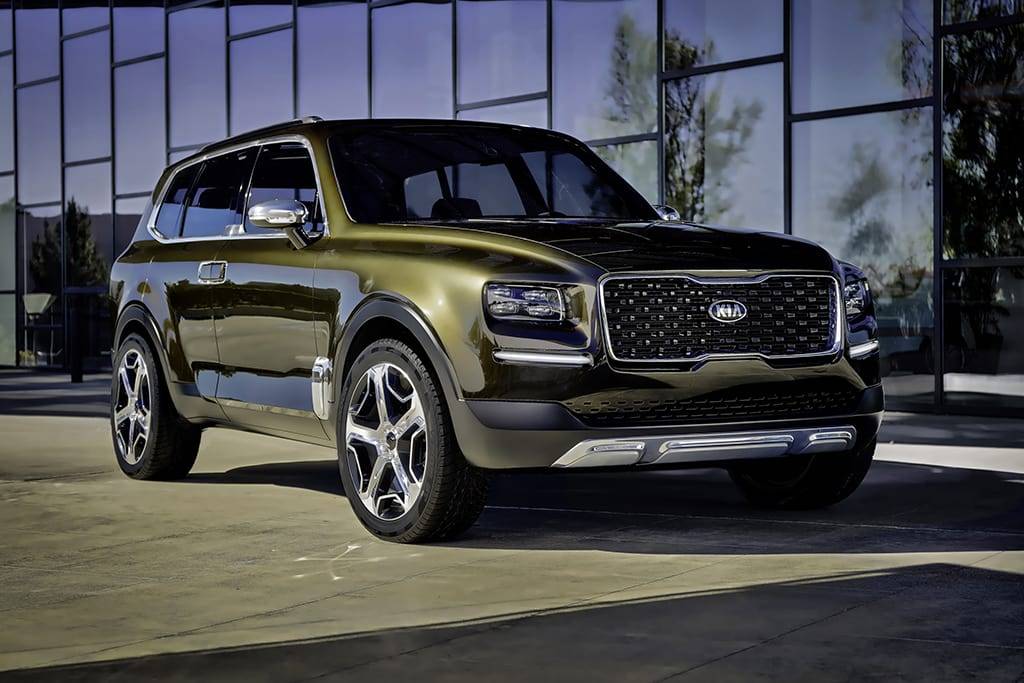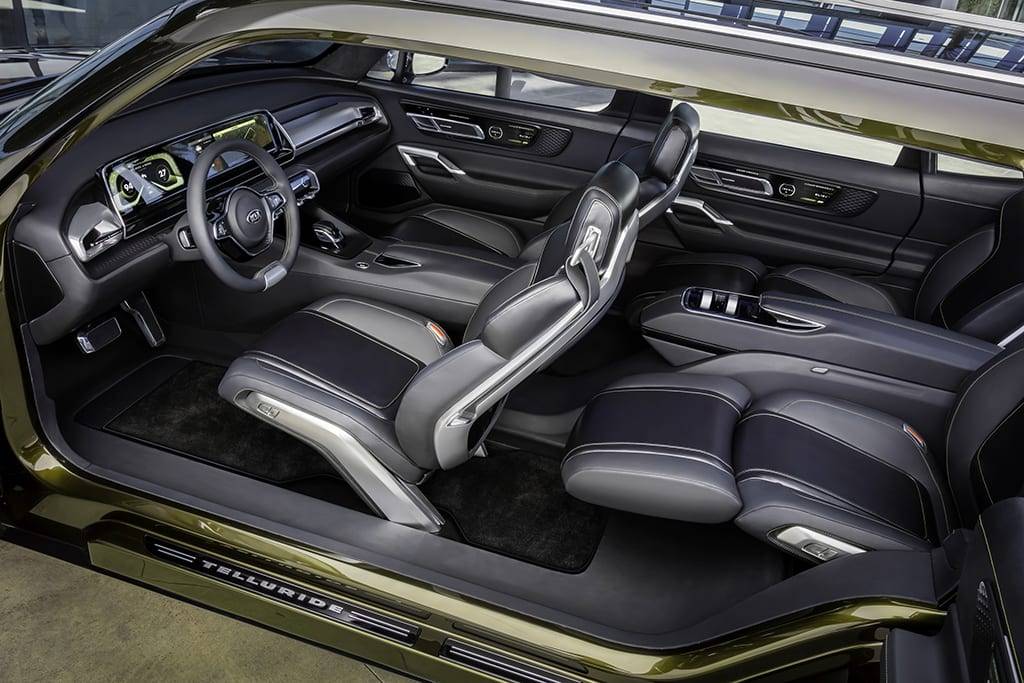Kia Telluride Concept: First Look


CARS.COM
Looks like: A futuristic take on the Volvo XC90, with exterior styling that actually looks like it could make it onto a production vehicle
Defining characteristics: A huge second row with seats that can recline almost flat; doors that open in opposite directions to a full 90 degrees; large tiger nose front grille
Ridiculous features: “Smart Sensors” mounted in the seats that can read occupants’ vital health information; fingerprint-activated push-button starter; light rejuvenation system that uses LEDs to create therapeutic light in the cabin
Chances of being mass-produced: Fifty percent. Most of the interior technology is a bit too forward-thinking to make it into a production vehicle, but it would not be a surprise to see Kia produce a large luxury SUV with similar exterior styling.
Related: More Detroit Auto Show Coverage
Kia unveiled its futuristic take on the three-row luxury SUV, the Telluride concept, at the 2016 North American International Auto Show in Detroit.
This isn’t Kia’s first foray into luxury territory. The K900, the automaker’s full-size luxury sedan, started as a concept that (surprisingly) ended up in production, so the Telluride could be a signal that it’s ready to jump into the large luxury SUV segment. The Telluride sits on a stretched Sorento platform, wears upright styling and includes some exciting technology innovations in the cabin with an emphasis on second-row comfort and health monitoring.
Exterior
The Telluride’s exterior is fairly innocuous for a concept. Many of its design cues, from the larger tiger nose front grille to the wheels and straightforward exterior lighting elements, would not look out of place on a production car. If Kia does make a large SUV, these features have a good chance of making it onto real streets.
This is, however, still a concept, and there are a few elements that won’t likely make it, including the 22-inch wheels and the doors that are designed to open in opposite directions to form a large entrance to the cabin. The doors look dramatic, but the absence of a B-pillar might make it too difficult to pass crash tests.

Interior
The exterior of the Telluride may be rooted in reality, but the interior skews toward fantasy, especially with innovations related to health monitoring and wellness.
A series of diamond-shaped cutouts in each of the front four seats house “Smart Sensors” that capture health information from occupants. The data is displayed on screens found on each door. The information is also routed to a light emitted rejuvenation system that uses an LED panel below the sunroof to shine patterns of therapeutic light. Kia says this technology can treat jet lag and improve the energy levels of occupants.
Kia’s concept emphasizes second-row comfort and the added wheelbase length (stretched about a foot from the Sorento) pays dividends for those passengers. The second-row captain’s chairs can fold almost completely flat and have foldaway footrests with plenty of space to stretch out. The Swipe Command media system allows second-row passengers to scroll through entertainment options by swiping a touch-sensitive band in the second-row console.
Under the Hood
The Telluride concept uses a hybrid system that combines a 3.5-liter direct-injection V-6 with an electric motor. Total system horsepower is 400, with 270 coming from the V-6 and 130 from the electric motor. There was no word on transmission options. Kia says the Telluride would get more than 30 mpg on the highway if produced.

Former L.A. Bureau Chief Brian Wong is a California native with a soft spot for convertibles and free parking.
Featured stories




